Soil moisture sensors come in different sizes and shapes. Have you ever wondered what’s the difference between those agriculture sensors? Well, in this article we are gonna find out. Soil sensors have been known to be extremely effective in IoT agriculture applications for a long time. Over the years, companies have developed multiple agriculture soil sensing solutions to fit different needs. But as we are going to find out, no agricultural soil moisture sensor was born the same.
The Difference in soil moisture sensors
As you continue your research for the best soil moisture sensor, you might find out that the market is bloated with available agriculture hardware. Both cheap, and expensive.
In terms of technical specifications, most of the sensors are designed the same. It’s either resistive soil sensors or capacitive soil sensors. Capacitive sensors can usually stay in the soil for a longer period of time and avoid corrosion. Hence, those types of sensors are often recommended for beginners and advanced users as one.
Another difference is the ability to sustain outdoor or indoor conditions. Some IoT soil moisture sensors are waterproof while some are not. It’s important to choose the right sensor for you in order to avoid complications during the development of the application.
Differences in sensors sizes
Size does matter. Especially when it comes to the agriculture IoT soil moisture sensors. Those sensors are designed to be planted in soil, hence, the larger the sensor the more surface it will come in contact with. More surface means it will read more accurately, even the smallest touch to water will trigger to show the differences in capacitance.
Usually, a large IoT soil moisture sensor would be longer in size, and suitable for farms and big gardens. A short IoT soil moisture sensor would be suitable for a single plant or a pot.
Find a precise soil moisture sensor
We often use the word “precise sensors” in this article, but what does that mean? In soil moisture sensors, precision basically means resolution. The resolution stays for the larger value – the smallest value. That is if the input of the sensor let’s say is 5V and the sensor is outside in the air, that would be the highest value. If we submerge the soil sensor under water and calculate the voltage again, we will find out that the value dropped to near zero volts. If we take the distance between the two values, we can get the resolution.
The resolution will determine how accurate the sensor is. Bigger resolution means more values for reading which basically means the sensor will be able to determine early on when the soil drys out and when it’s full of water.
For example, STEMinds long soil moisture sensor is found to have the highest resolution among dozen market available sensors we have tested. It also appears to have almost the. lowest power consumption which is indeed an important thing in IoT applications.
Soil moisture sensors recommendations
No single sensor can be recommended for all applications. it all depends on your needs and the IoT project you are going to work on. If it’s an outdoor application, make sure to waterproof your existing sensor or look for an industrial sensor, which can be quite pricey. If it’s an indoor application, a non-waterproof IoT soil moisture sensor might work well!
How to program soil moisture sensor
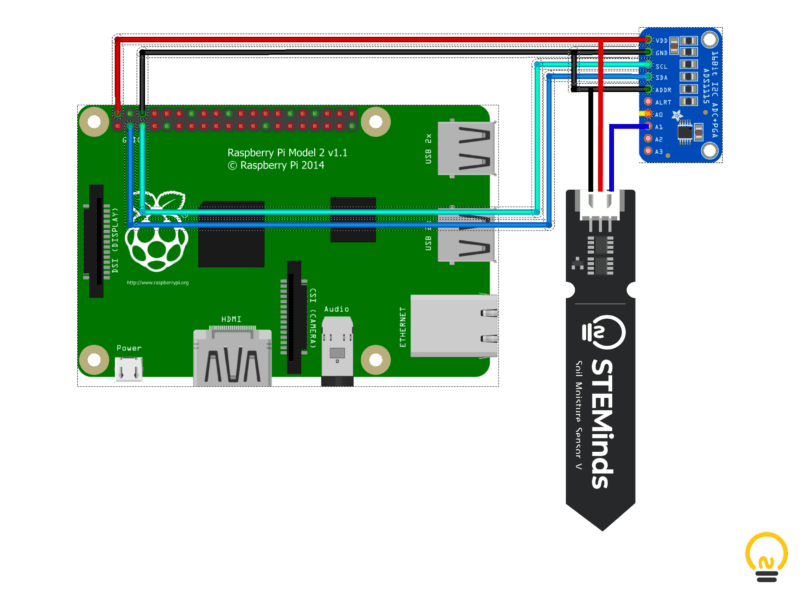
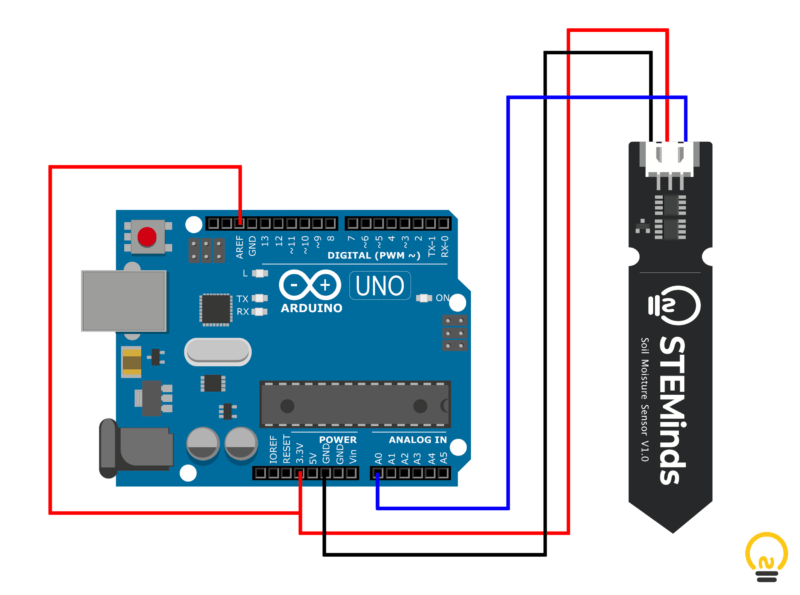
If you are looking for how to program and write code to read data from your soil moisture sensor, check out the STEMinds documentation, the source code is also available on STEMind’s official GitHub page. For a detailed tutorial, check out this article about smart irrigation systems using a soil moisture sensor.
IoT soil sensor within a kit
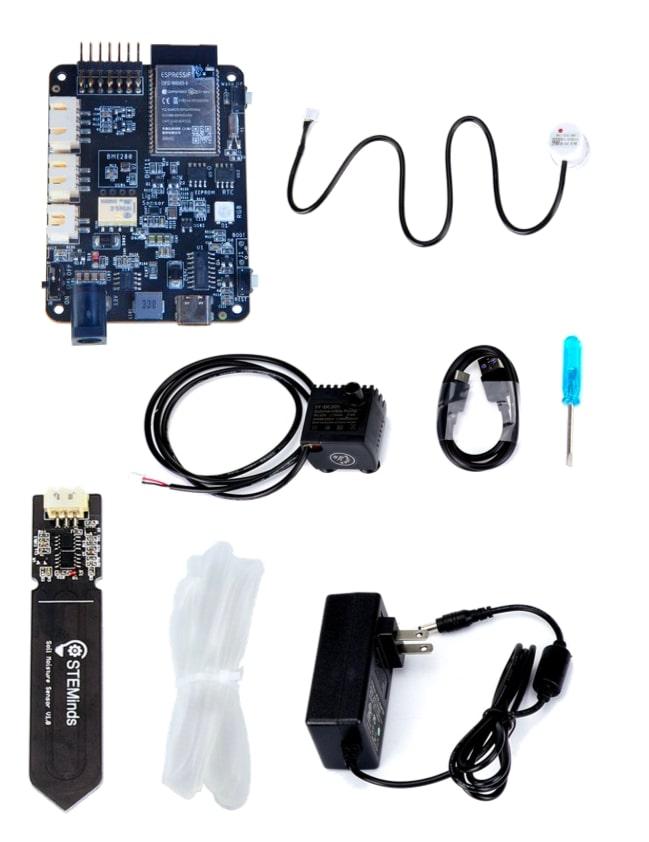
If you are looking to purchase a kit, you should probably consider the STEMinds agriculture IoT kit. It comes with everything you need to build your smart garden or smart water irrigation system. The kit includes a short soil moisture sensor, a pump, Eduponics mini agriculture dev board, and everything you need to get started. Normally, agriculture applications require more than a single sensor. With the agriculture IoT kit, you can get everything you need without messing around.

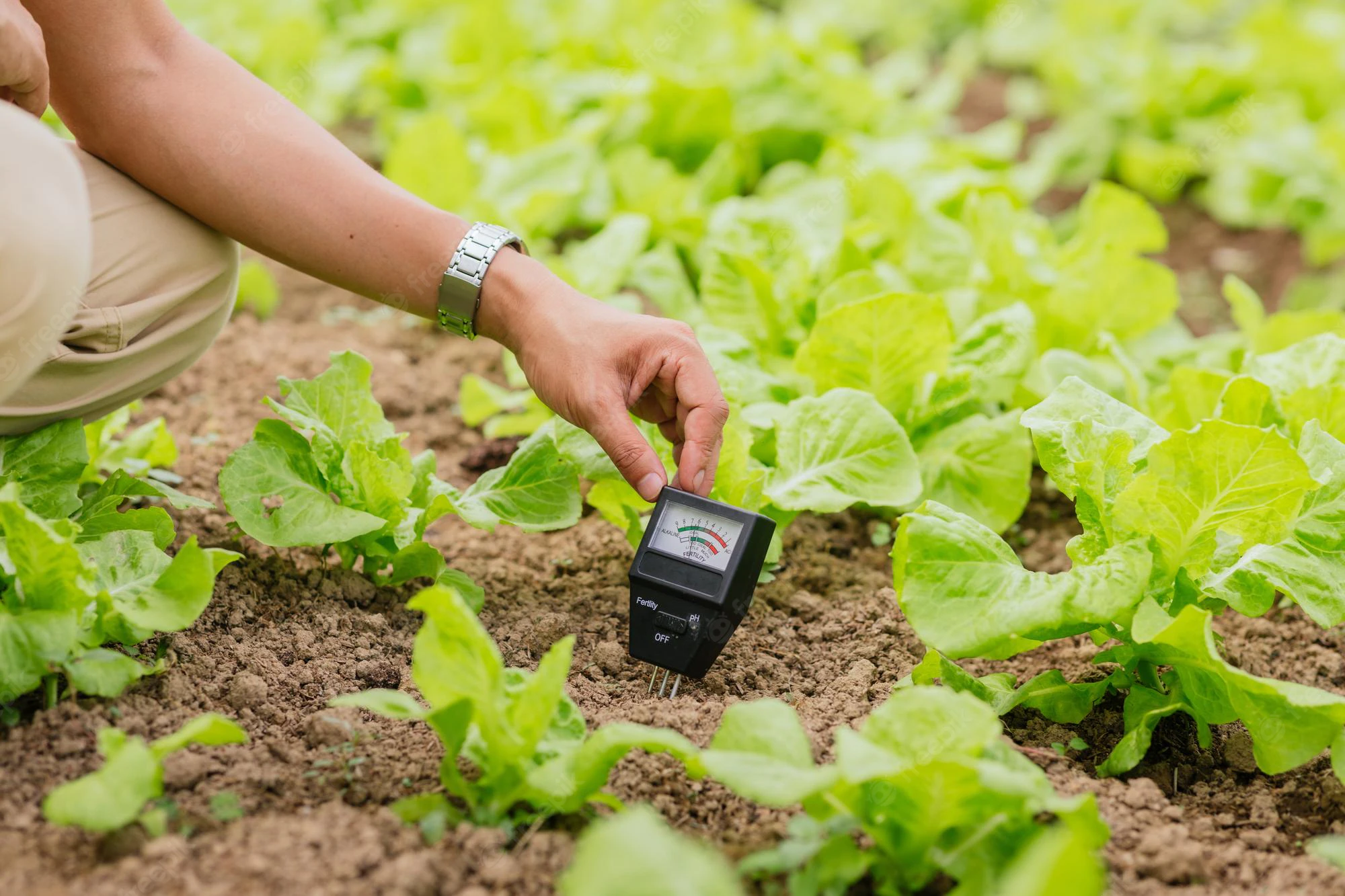
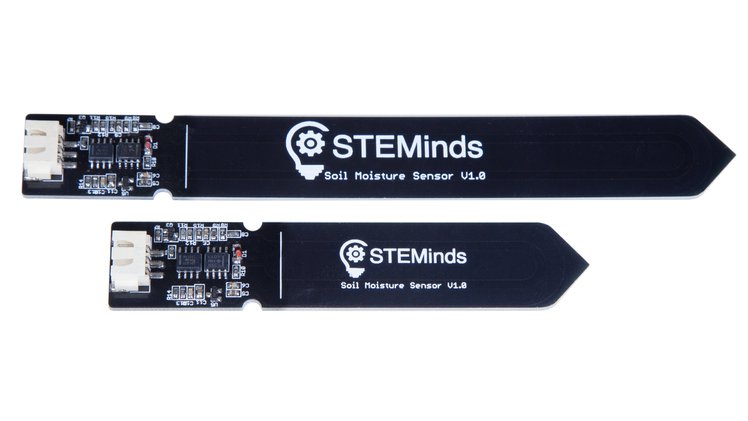











great post, keep it up!